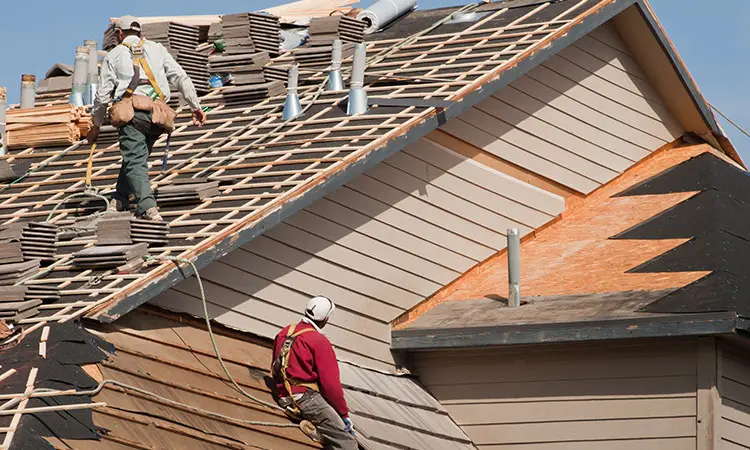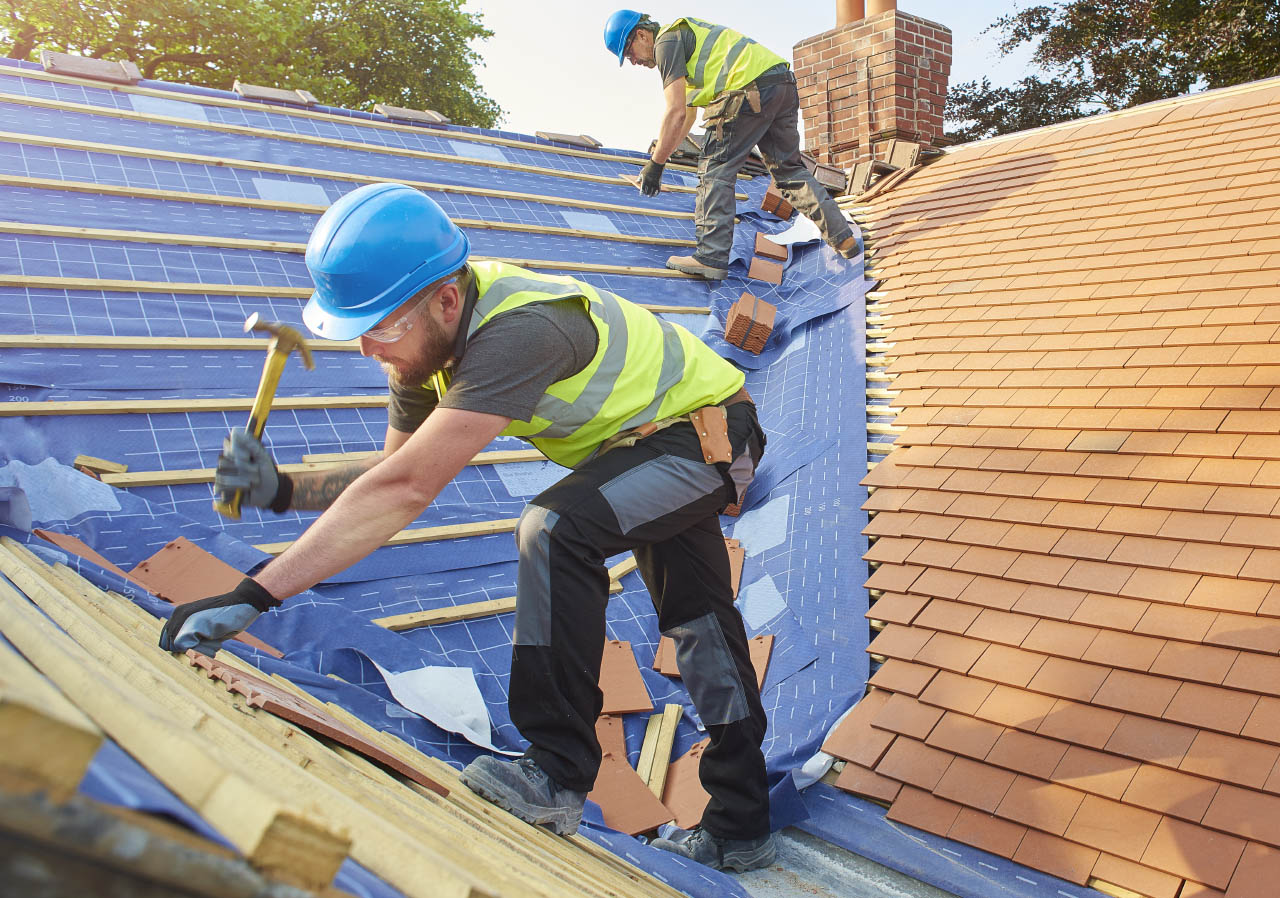Roofers Oahu: Knowledgeable Service Providers for Roof Installations and Repairs
Understanding the Various Sorts Of Roofings: A Comprehensive Overview for Homeowners
In the realm of homeownership, choosing the ideal roof style is a decision that carries significant effects for both functionality and visual appeal. With a range of alternatives-- ranging from the traditional gable to the modern level-- each type provides unique advantages and challenges that ought to align with the property owner's particular demands and ecological considerations. Understanding these distinctions not just aids in making an informed option however additionally influences long-term upkeep and power effectiveness. As we check out the details of numerous roof types, it comes to be apparent that a person size does not fit all; the appropriate option may shock you.
Saddleback Roof
Saddleback roofs, identified by their triangular form, are amongst one of the most preferred roofing styles due to their simplicity and efficiency in dropping water and snow. This layout features two sloping sides that fulfill at a ridge, enabling effective drain and minimizing the danger of water accumulation. The steep pitch frequently connected with saddleback roofs improves their capability to handle heavy rainfall, making them suitable for numerous environments.
Along with their functional benefits, saddleback roofs supply visual flexibility. They can be adjusted to various architectural designs, from traditional to modern homes. The layout can likewise accommodate added attributes such as dormer windows, which improve natural light and air flow in the attic room area.
Moreover, gable roofings provide enough area for insulation, contributing to power effectiveness. House owners can pick from a variety of roof covering products, including asphalt roof shingles, metal, and floor tiles, better enhancing customization choices.
Despite their advantages, saddleback roofs might require extra assistance in locations vulnerable to high winds or heavy snowfall. On the whole, the gable roof covering remains a preferred option due to its blend of performance, longevity, and visual allure.
Flat Roofs
Flat roofings are frequently identified for their minimal style and useful applications, especially in commercial and industrial settings (oahu roofing). These roof coverings feature a virtually straight or straight surface, which permits easy building and versatile space use. While they might do not have the visual charm of angled roofs, flat roofing systems provide many advantages, specifically in city settings where optimizing area is important
Among the primary benefits of flat roofs is their availability. Home owners can use the roof area for various purposes, such as roof gardens, terraces, or solar panel setups. Furthermore, flat roofs are generally extra cost-efficient to install and preserve contrasted to their sloped counterparts, as they require fewer materials and labor.
Nevertheless, level roofings do existing particular obstacles. Proper drain is necessary to avoid water merging, which can result in leakages and structural damage. Thus, picking high-quality waterproofing products and regular assessments are critical for making certain long life. Common products used for flat roof coverings consist of built-up roof covering (BUR), modified bitumen, and single-ply membrane layers, each offering unique benefits. In general, level roofings offer as a versatile and functional selection for lots of home owners and services alike.
Hip Roofs
Hip roof coverings are characterized by their sloped sides that merge on top, creating a ridge. This layout stands out from gable roofs, as all 4 sides of a hip roof covering slope downwards towards the walls, giving an extra stable framework. The angle of the inclines can vary, enabling adaptability in architectural looks and functionality.
Among the primary advantages of hip roofs is their capacity to hold up against heavy winds and adverse weather condition problems. The sloped surface areas allow much better water drain, decreasing the risk of leaks and water damage. Additionally, hip roofings offer enhanced attic room area, which can be used for storage space and even exchanged habitable areas.
Nevertheless, constructing a hip roof covering can be extra complex and pricey than simpler roof covering kinds, such as saddleback roofs. The additional material and labor involved in developing the slopes and guaranteeing correct structural honesty can bring about higher costs. Regardless of these click this drawbacks, several homeowners prefer hip roof coverings for their resilience, visual appeal, and capacity for energy effectiveness.
Mansard Roof Coverings
Mansard roofing systems, often identified by their one-of-a-kind four-sided design, feature 2 inclines on each side, with the reduced incline being steeper than the top. This building style, stemming from France in the 17th century, is not only cosmetically appealing yet functional, as it makes the most of the usable space in the top floorings of a structure. The high lower slope enables more headroom, making it an excellent choice for lofts or attic rooms, which can be exchanged living areas.
Mansard roof coverings are defined by their versatility, fitting different building designs, from standard to contemporary. They can be created with different products, consisting of asphalt tiles, slate, or metal, giving home owners with a range of alternatives to fit their budget plans and preferences. Additionally, the design permits the integration of dormer windows, boosting all-natural light and air flow in the upper degrees.
However, it is essential to think about the potential downsides. Mansard roof coverings may require more upkeep due to the complexity of their design, and their steep slopes can be testing for snow and rainfall drainage. On the whole, mansard roofing systems incorporate beauty with functionality, making them a popular choice amongst property owners seeking unique building features.
Dropped Roof Coverings
As property owners increasingly seek simpleness and capability in their architectural styles, shed roof coverings have emerged as a prominent selection. Characterized by a solitary sloping airplane, a shed roof covering offers a minimal visual that matches different home designs, from modern to rustic.
Among the primary benefits of a shed roofing system is its straightforward building and construction, which frequently equates to decrease labor and product costs. This design permits efficient water drain, minimizing the danger of leakages and water damage. Additionally, the upright slope provides adequate room for skylights, boosting natural light within the interior.
Shed roofing systems likewise provide adaptability in regards to use. They can be successfully incorporated into additions, garages, or exterior structures like sheds and structures. Moreover, this roofing system design can accommodate numerous roof materials, consisting click here for more info of metal, asphalt tiles, and even eco-friendly roofing systems, lining up with green campaigns.
Nonetheless, it is important to take into consideration regional environment conditions, as heavy snow tons may demand adjustments to the roof covering's angle or structure. Overall, shed roofings provide a useful and cosmetically pleasing alternative for homeowners seeking to maximize performance without compromising design.
Final Thought


Gable roofs, defined by their triangular shape, are among the most prominent roofing designs due to their simpleness and effectiveness in shedding water and snow. oahu roofing. The high pitch generally linked with gable roofs improves their ability to take care of heavy precipitation, making them suitable for different environments
While they may lack the aesthetic appeal of pitched roof coverings, flat roofing systems use countless benefits, especially in metropolitan atmospheres where taking full advantage of room is important.
